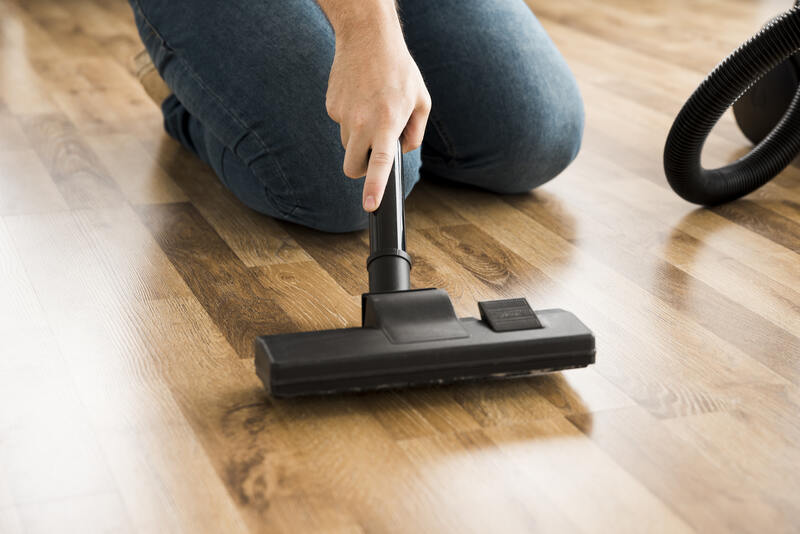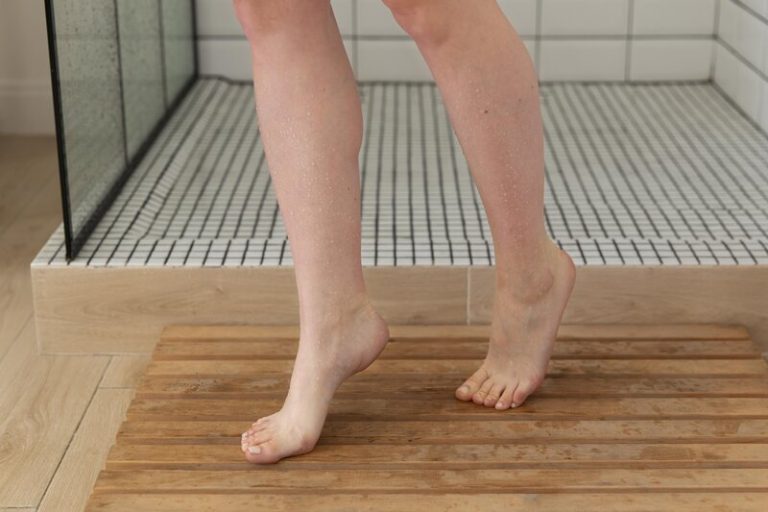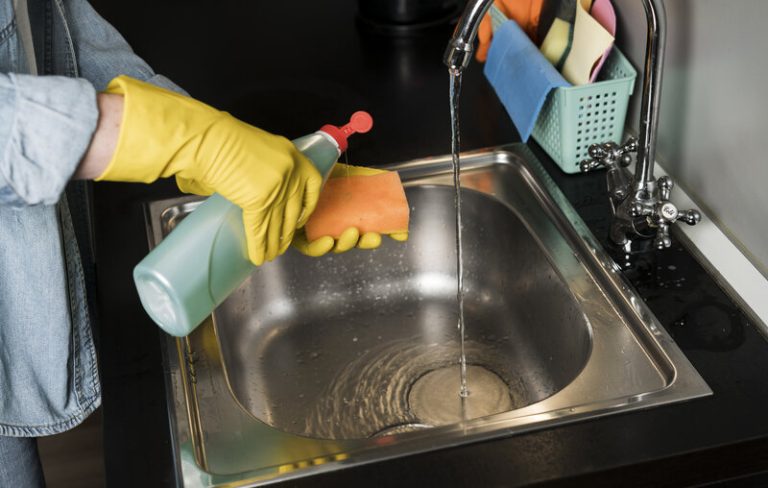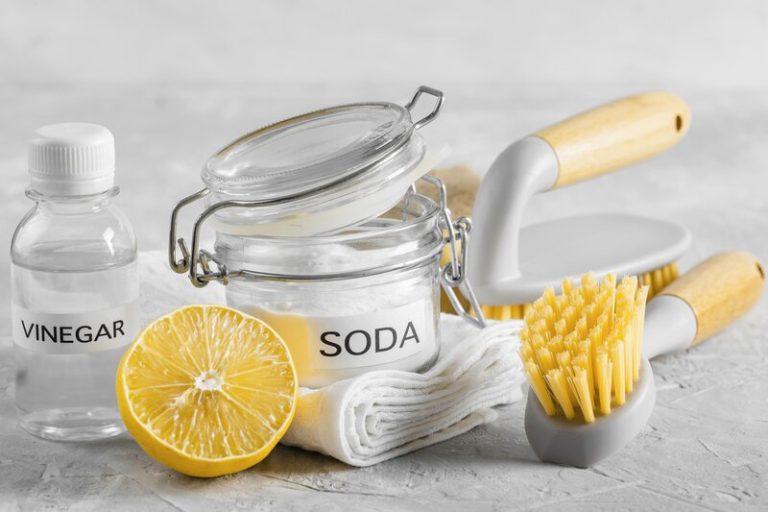Have you ever wondered how to clean LVT flooring and why it’s important to keep it clean?
In this article, we will explore the world of LVT flooring, discuss the importance of cleaning it regularly, and provide you with a comprehensive guide on how to clean LVT flooring.
From the tools and products needed to clean LVT flooring to useful maintenance tips, we’ve got you covered.
If you want to keep your floors looking pristine, read on for our how to clean LVT flooring guide to find out more!
The Importance of Cleaning LVT Flooring
Before discussing more about how to clean LVT flooring, let’s first understand the importance of this activity.
Luxury Vinyl Tile (LVT) flooring is a popular choice for British homes due to its durability, affordability, and stylish designs. It provides a cost-effective alternative to traditional flooring materials like laminate.
Cleaning LVT flooring is crucial to maintain its appearance and longevity. Regular cleaning helps to prevent stains, scratches, and scuffs, preserving the beauty of luxury vinyl tiles.
By keeping your LVT flooring clean, you not only enhance the visual appeal of your space but also extend the lifespan of your flooring investment. Dirt and grime can gradually build up if left unattended, leading to discolouration and potential damage over time.
Spills and stains are common occurrences in everyday life, and prompt cleaning is essential to prevent these from seeping into the floor and causing permanent marks. Neglecting regular maintenance can result in a dull, worn-out look that detracts from the overall aesthetic of your room.
Tools and Products are Needed to Clean LVT Flooring
Cleaning LVT flooring requires specific tools and products for effective maintenance, and these include:
a. Vacuum Cleaner
Using a hoover is an efficient way to remove dirt and debris from LVT flooring. It helps in maintaining the cleanliness and appearance of the floors without causing any damage.
One critical aspect to bear in mind is the type of hoover used on LVT flooring. Opt for models with adjustable suction levels to prevent excessive force that could potentially scratch or scuff the surface. Choosing a hoover with soft bristles or brush rolls that are gentle on the flooring material is essential.
Regular hoovering not only keeps your LVT floors looking great but also extends their lifespan by preventing the buildup of dirt and grime that can wear down the surface over time. Proper hoovering techniques, such as using gentle back-and-forth motions instead of harsh scrubbing, are key to preserving the beauty of your floors.
b. Microfiber Mop
A microfibre mop is an excellent tool for cleaning LVT flooring as it effectively removes dirt and spills without leaving streaks. It is gentle on the surface and helps maintain the floor’s shine.
One of the key benefits of using a microfibre mop is its exceptional absorbency. The fibres are designed to trap and hold onto dirt and liquid, making them highly efficient in cleaning LVT flooring. These mops are incredibly easy to use, requiring minimal effort to glide across the floor and pick up debris.
Microfibre mops are compatible with water-based cleaning solutions, which makes them ideal for maintaining the cleanliness and appearance of LVT floors without causing any damage. To ensure the longevity of your microfibre mop, it is important to regularly wash the mop head in warm water and mild detergent.
Avoid using bleach or fabric softeners as they can degrade the fibres. Hang the mop head to air dry thoroughly before the next use to prevent the growth of mould and bacteria.
c. Neutral pH Cleaner
A neutral pH cleaner is ideal for LVT flooring as it effectively cleans without causing damage. Avoid cleaners containing harsh chemicals like ammonia or bleach, which can harm the floor’s surface.
The use of a neutral pH cleaner on LVT flooring is vital for maintaining its longevity and appearance. These cleaners are specifically formulated to gently remove dirt and grime without compromising the integrity of the flooring material.
Ammonia and bleach-based cleaners, on the other hand, can strip away the protective coating on LVT floors, leading to discolouration and potentially irreversible damage. It’s crucial to prioritise the use of gentle cleaners to ensure that your LVT flooring stays in top condition for years to come.
d. Hot Water
Hot water is a simple yet powerful cleaning agent for LVT flooring, especially for tackling tough stains and spills. It helps loosen dirt and grime, making it easier to clean the floor effectively.
Using hot water for cleaning LVT flooring not only provides a cost-effective solution but also minimises the use of harsh chemicals, making it eco-friendly. The heat from the water helps to break down stubborn stains and spills, effectively removing them without much effort. Hot water is versatile and can be used in combination with gentle cleaning solutions for enhanced results.
How to Clean LVT Flooring?
Basically, cleaning LVT flooring can be done effectively with simple DIY methods to remove scuffs, scratches, and stains. Here is a further explanation of the step-by-step in how to clean LVT flooring.
a. Vacuum or Sweep the Floor
The first step in cleaning LVT flooring is to vacuum or sweep the floor to remove debris and dirt. This initial maintenance helps prepare the floor for further cleaning steps.
When vacuuming LVT flooring, it is important to choose a vacuum cleaner that is gentle on the surface to avoid causing any damage. Look for vacuums with adjustable height settings or those specifically designed for hard floors.
For sweeping, use a soft-bristled broom or a microfiber dust mop to effectively collect dust and debris without scratching the surface of the LVT flooring.
Be sure to vacuum or sweep in the direction of the flooring planks for optimal dirt removal and to prevent particles from getting stuck in the seams.
b. Prepare the Cleaning Solution
Next, prepare a cleaning solution using a neutral pH cleaner and hot water to tackle stains and dirt effectively. Ensure the solution is well-mixed before application.
When creating the cleaning solution, it’s crucial to follow the recommended dilution ratios to ensure the best results for your LVT flooring. While different cleaners may have specific instructions, a general guideline is to mix 1 cup of neutral pH cleaner with approximately 1 gallon of hot water. This balanced ratio helps maintain the integrity of the flooring while effectively removing grime.
c. Mop the Floor
Using a microfibre mop, clean the LVT floor with the prepared solution, focusing on removing scuffs and dirt. Ensure even coverage and gentle pressure whilst mopping.
When mopping your LVT floor with a microfibre mop, it’s essential to move in a methodical manner to guarantee all areas are thoroughly cleaned. Start from one corner of the room and work your way across, making sure to overlap your strokes slightly for consistent coverage. Remember that the beauty of using a microfibre mop lies in its ability to trap dust and grime while being gentle on the floor surface. This means you can achieve a spotless finish without the worry of scratches or damage.
d. Rinse the Floor with Hot Water
After mopping, rinse the LVT floor with hot water to remove any remaining residue from the cleaning solution. This step helps ensure a thorough and residue-free cleaning.
When rinsing, make sure the water temperature is comfortably hot, but not scalding, as extreme heat can damage the flooring.
Using hot water helps to break down any lingering dirt or grime while effectively removing traces of the cleaning solution, leaving the LVT surfaces immaculately clean.
After rinsing, ensure thorough drying using a clean, dry mop or cloth to prevent any water streaks or potential water damage to the floor.
e. Dry the Floor
Allow the LVT floor to dry completely after cleaning to prevent moisture-related issues and maintain its quality. Drying the floor thoroughly also helps prevent scuffs and scratches.
Properly drying your LVT floor is crucial to ensure its longevity and appearance. When moisture lingers on the surface, it can lead to warping or discolouration, impacting the overall aesthetic of your space. Thorough drying also plays a key role in preventing any potential growth of mould or mildew.
To effectively dry your LVT flooring, consider using fans or opening windows to promote air circulation. Placing absorbent towels on the floor can help soak up excess moisture. It’s essential to pay attention to areas around skirting boards and corners as they tend to retain more moisture.
Some Tips for Maintaining LVT Flooring
After knowing how to clean LVT flooring, it’s good if you also know some tips for maintaining it. Maintaining LVT flooring involves adopting a few simple tips to preserve its quality. From wiping up spills promptly to using furniture protectors, these tips can extend the lifespan of LVT floors. Check out the full explanation below.
a. Wipe Up Spills Immediately
One of the key maintenance tips for LVT flooring is to wipe up spills immediately to prevent staining and damage. Prompt action can help preserve the floor’s appearance.
Stains can quickly set into LVT flooring, especially if left unattended, leading to discolouration and making the floor look unkempt.
To tackle common spills like food and drink, use a mild detergent mixed with water to clean the area gently. For tougher stains like oil or grease, consider using a specialised LVT cleaner. Remember to blot the spills rather than scrubbing to avoid spreading the stain further.
b. Use Furniture Protectors
To prevent scratches and scuffs on LVT flooring, consider using furniture protectors under the legs of tables, chairs, and other heavy furniture. These protectors help distribute weight evenly.
This even weight distribution plays a critical role in safeguarding your LVT flooring from indentations caused by heavy objects. By using furniture protectors, you not only protect your flooring investment but also prolong its lifespan.
These protectors provide a cushioning layer that reduces noise and vibrations when furniture is moved, enhancing the overall comfort of your living space.
c. Avoid Harsh Chemicals
When cleaning LVT flooring, avoid harsh chemicals like ammonia or bleach as they can damage the surface and finish. Opt for gentle, neutral pH cleaners to maintain the floor’s quality.
Harsh chemicals like ammonia and bleach can strip off the protective coatings on LVT flooring, making it more susceptible to scratches, discolouration, and overall wear and tear. The strong acidic or alkaline nature of these substances can react with the materials of the floor, causing irreversible harm.
Instead, choosing neutral pH cleaners ensures effective cleaning without risking any harm to the surface or the environment. These milder alternatives are designed specifically for delicate surfaces like LVT, providing the perfect balance between cleanliness and safe maintenance.
d. Regularly Sweep or Vacuum
Regular sweeping or hoovering of LVT flooring helps prevent dirt buildup and maintains its appearance. This simple maintenance routine can extend the lifespan of the floor.
The accumulation of dirt and debris on LVT flooring not only affects its visual appeal but can also lead to scratches and damage over time. By staying proactive with regular cleaning, you are not only preserving the aesthetics of the floor but also ensuring its longevity.
Regarding choosing the right tools for cleaning LVT flooring, opt for a soft-bristle broom or a vacuum with a hard floor setting to avoid scratching the surface. In addition, consider using a damp mop with a mild cleaner specifically formulated for LVT floors to tackle stubborn stains effectively without causing harm.
e. Use Doormats to Reduce Dirt and Debris
Placing doormats at entry points can help reduce the amount of dirt and debris that enters the home, minimising the risk of scratching or damaging LVT flooring. These mats trap dirt effectively.
By capturing dirt and moisture from shoes, doormats act as the first line of defence for your LVT flooring. Not only do they extend the lifespan of your floors, but they also make cleaning and maintenance much easier.
By strategically placing doormats both inside and outside entryways, you create a barrier that prevents dirt from spreading throughout your home. Properly maintaining these doormats by regular cleaning, such as vacuuming or washing, ensures their effectiveness in keeping your floors clean and scratch-free.
There you have it, a complete step-by-step explanation of how to clean LVT flooring, including its importance, the tools and products needed, and some tips on how to maintain it. While these guidelines can help you care for your floors, sometimes you need a deeper, more professional clean to really rejuvenate and protect your investment.
For homeowners, our house cleaning services at TEKA Cleaning can ensure your LVT flooring is meticulously maintained, enhancing your home’s cleanliness and comfort. Our skilled cleaners use only the best tools and cleaning solutions to protect and beautify your floors.
If you own a business, particularly in the food and beverage industry, maintaining impeccable floors is not just about aesthetics but also hygiene. TEKA Cleaning’s commercial cleaning services are designed to handle the rigours of high-traffic areas, ensuring your LVT flooring withstands the test of time and use.
Don’t let the hassle of maintaining your floors bring you down. Let TEKA Cleaning handle the hard work while you focus on what matters most in your life or business. Call us today at 01233 751 544 to book your cleaning service or visit our website to learn more about how we can help keep your flooring spotless and professional looking.
Read also:











